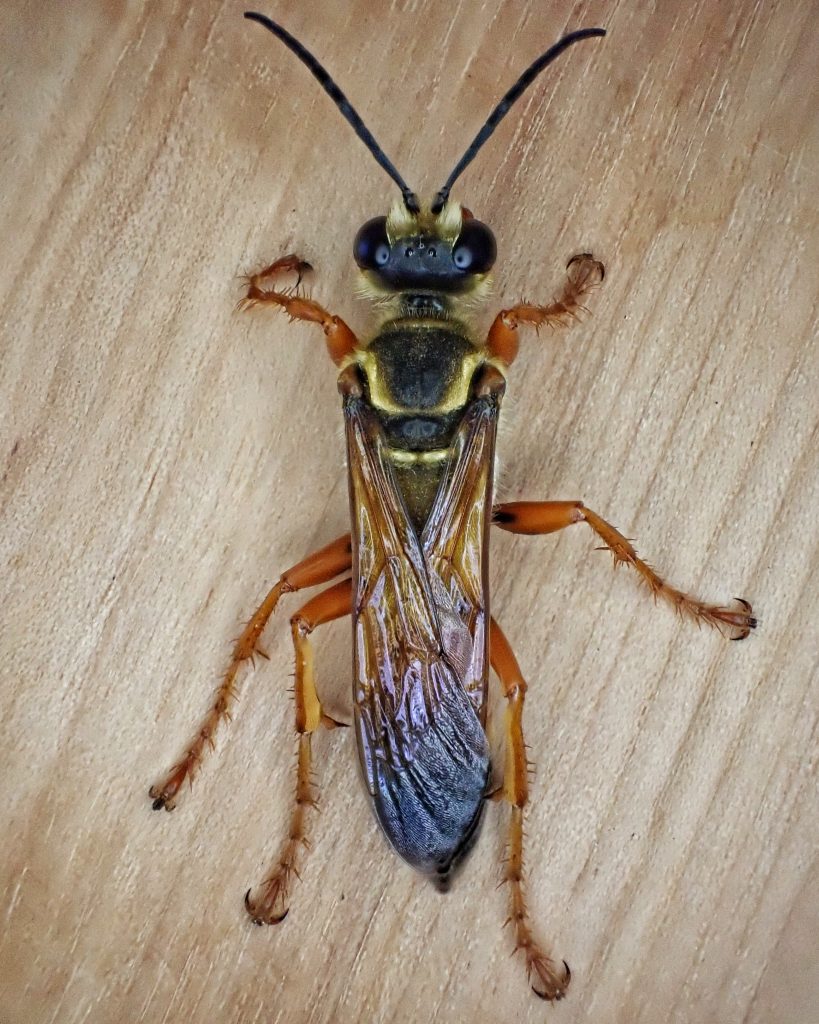
This is the biggest wasp I’ve ever seen! My friend Craig Sondergaard reminded me that we found Sphex ichneumoneus once in Klickitat County, but I wasn’t intimately involved in their capture then, so I wasn’t as struck by their size. This time I was pretty sure what it was, and I was excited. This was a day I didn’t have a camera, but it didn’t stop to be photographed anyway. Somehow I didn’t brick the capture, but it’s nerve wracking maneuvering a wasp of this size, even a non-aggressive one like a golden digger wasp, from net to container. I managed it, and after a bit of refrigeration it was a very cooperative portrait subject. And after I released it on the front porch it spent quite awhile climbing around on Pam’s potted plants, and I got several more aesthetically pleasing shots of this gorgeous and spectacular wasp.

These are very interesting wasps! As I’m discovering about so many solitary wasps, they are parasitoids. Like the Isodontia elegans that I recently profiled, they choose mostly kaytydids and tree crickets for their larval hosts, although they will take other orthopterans if necessary. When they catch one they paralyze it with their stinger, and then transport it to the den site. With most prey they are able to fly it back, but larger prey are dragged by their antennae. And it’s not always a simple task to get the host back to the nest. House sparrows, robins, and tanagers are known to harass the wasp until she drops her prey, and then steal the easy meal. No other digger wasps are known to be victimized this way.
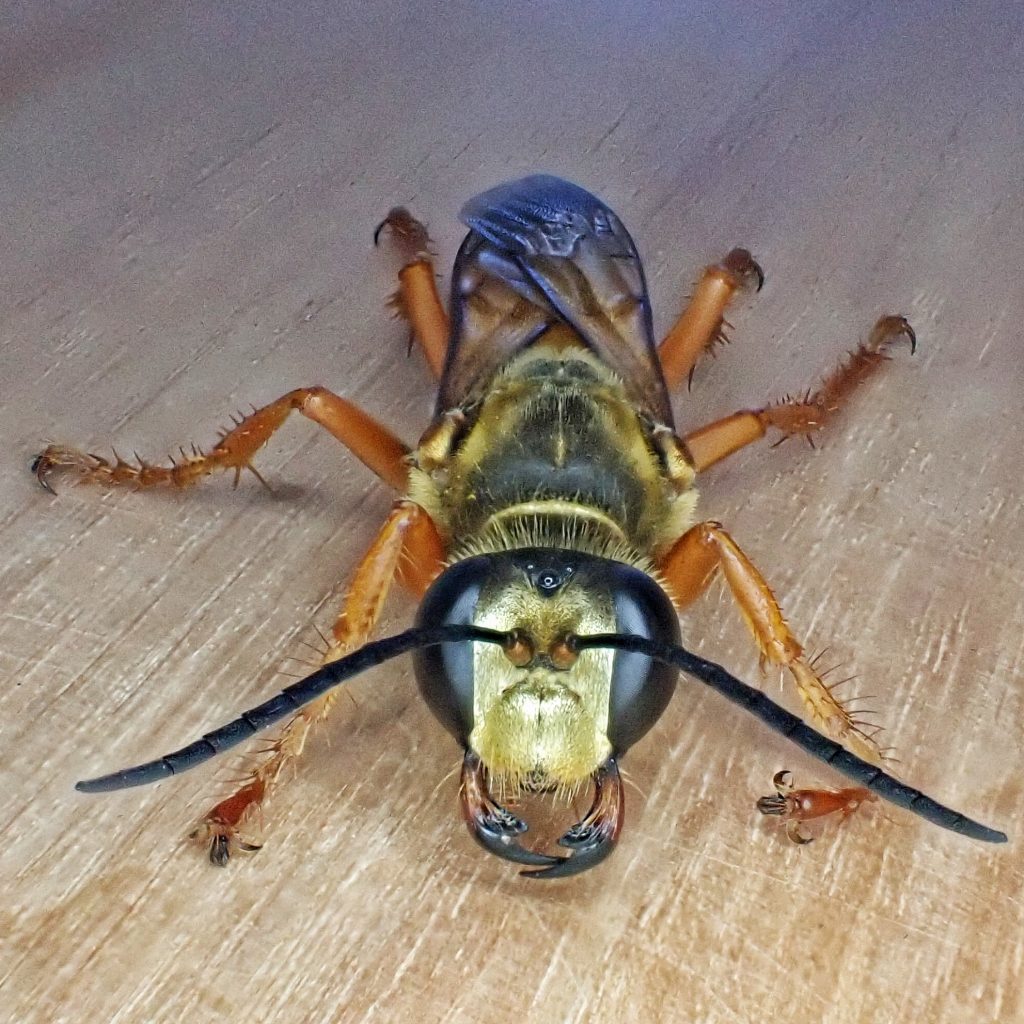
At the nest the wasp drops the prey at the edge of the entrance, and then goes inside and inspects the nest. But if the prey is moved in the wasps absence it will drag it back to the original spot, and then inspect the nest again! Researchers have seen this happen over and over again, if they keep moving the prey. The wasp apparently has programming that simply won’t allow it to place any prey not found in the designated spot directly into the nest without an inspection. If there are no interfering researchers about, the wasp drags the prey into the burrow head first, and deposits it at the end of one of the brood chambers, which are larger than their tunnel to allow the wasp to accomplish this and to retreat afterwards.
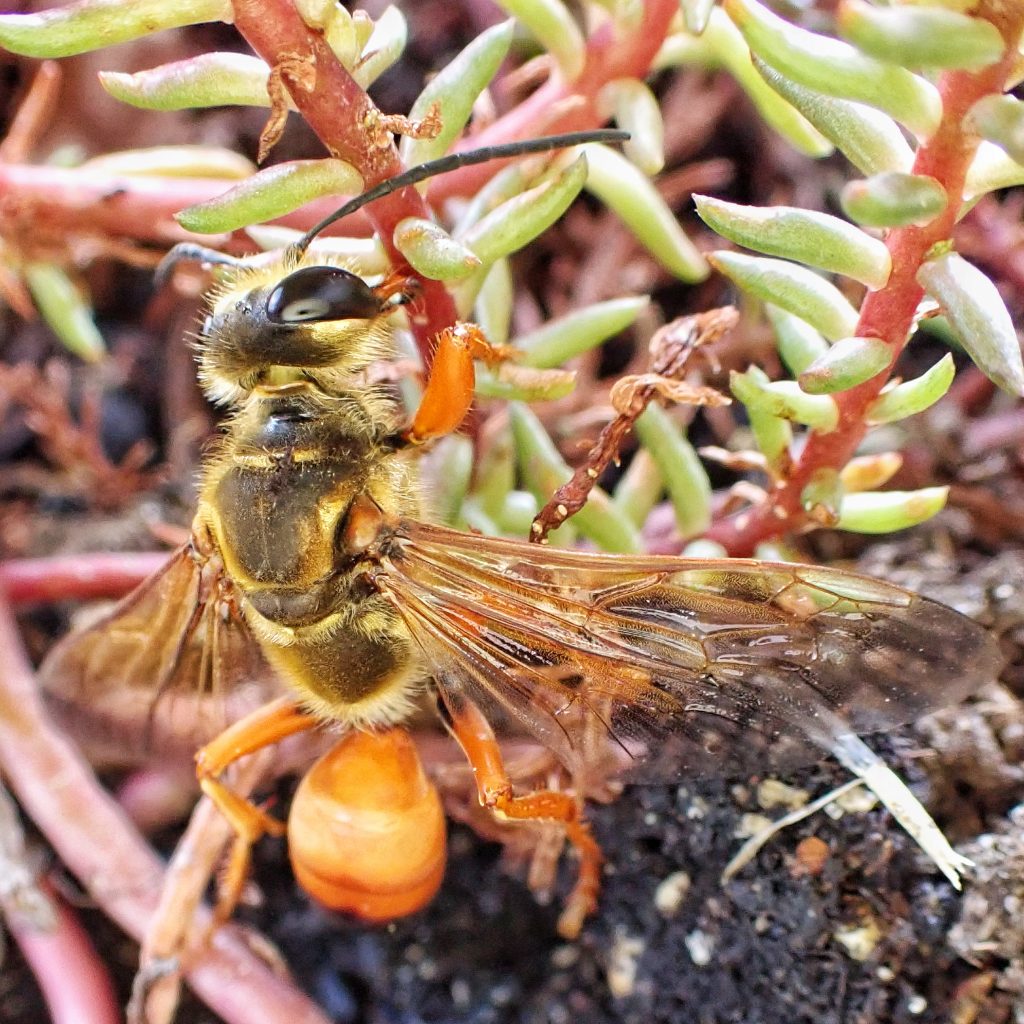
After all brood chambers are provisioned they lay a single egg on the thorax of each host, then seal off the entrance. They do not guard the nest. Their larvae slowly consume their host, overwinter in the nest, pupate the following spring, and emerge from darkness in summer to start the cycle anew. Besides being beautiful, useful pollinators, and an integral part of their ecosystem, they are also considered beneficial by gardeners and farmers because of the problematic orthopterans they remove. Despite their large size they shouldn’t be confused for Asian giant hornets (ETA- I have been informed that, so as not to further inflame the bigots in our society, the ‘official’ common name has been changed to northern giant hornets) (Vespa mandarinia), which have a large orange head, brown antenna, and orange and black striped abdomen.
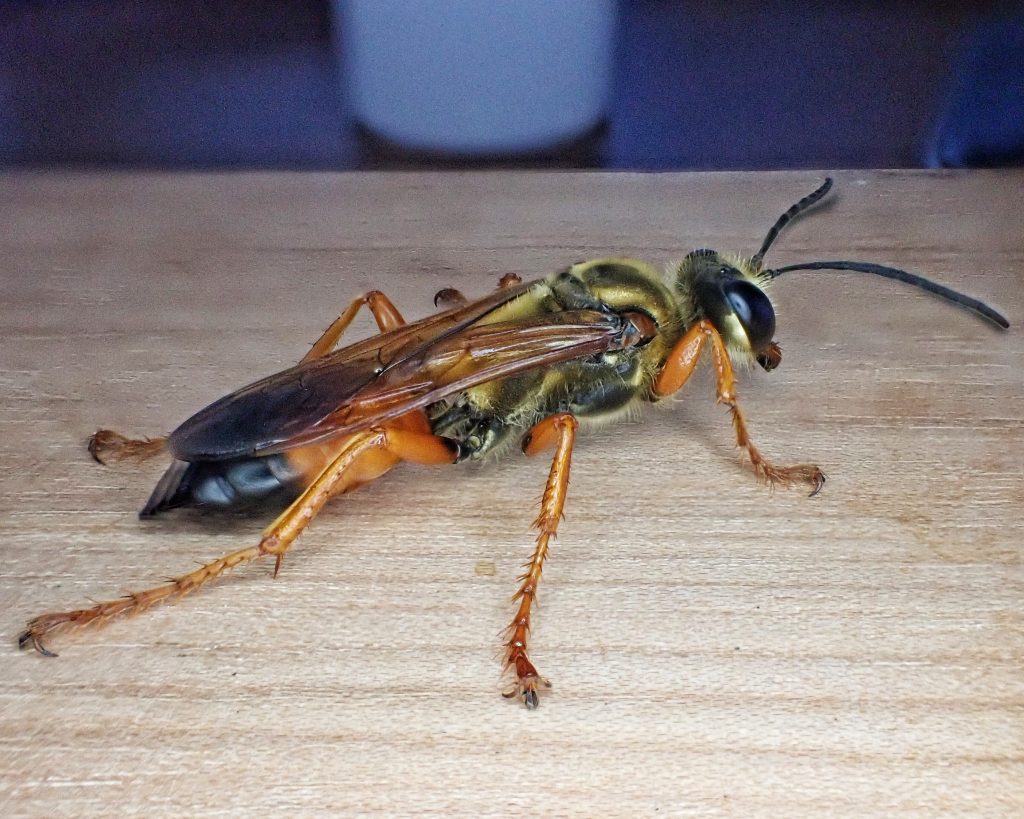
Description-Large (total length 15-27mm) orange and black wasp with abundant golden hair on the head and thorax; front half of abdomen and legs are orange, and the antennae and rear half of abdomen are black; head is black and the clypeus (face) is gold.
Similar species–Sphex lucae and S. ashmeadi females have all red abdomen and males have all black abdomen; S. dorsalis (not yet known from our region but expanding its territory) female has orange band near tip of abdomen; Northern giant hornets (Vespa mandarinia) have a large orange head, brown antenna, and orange and black striped abdomen.
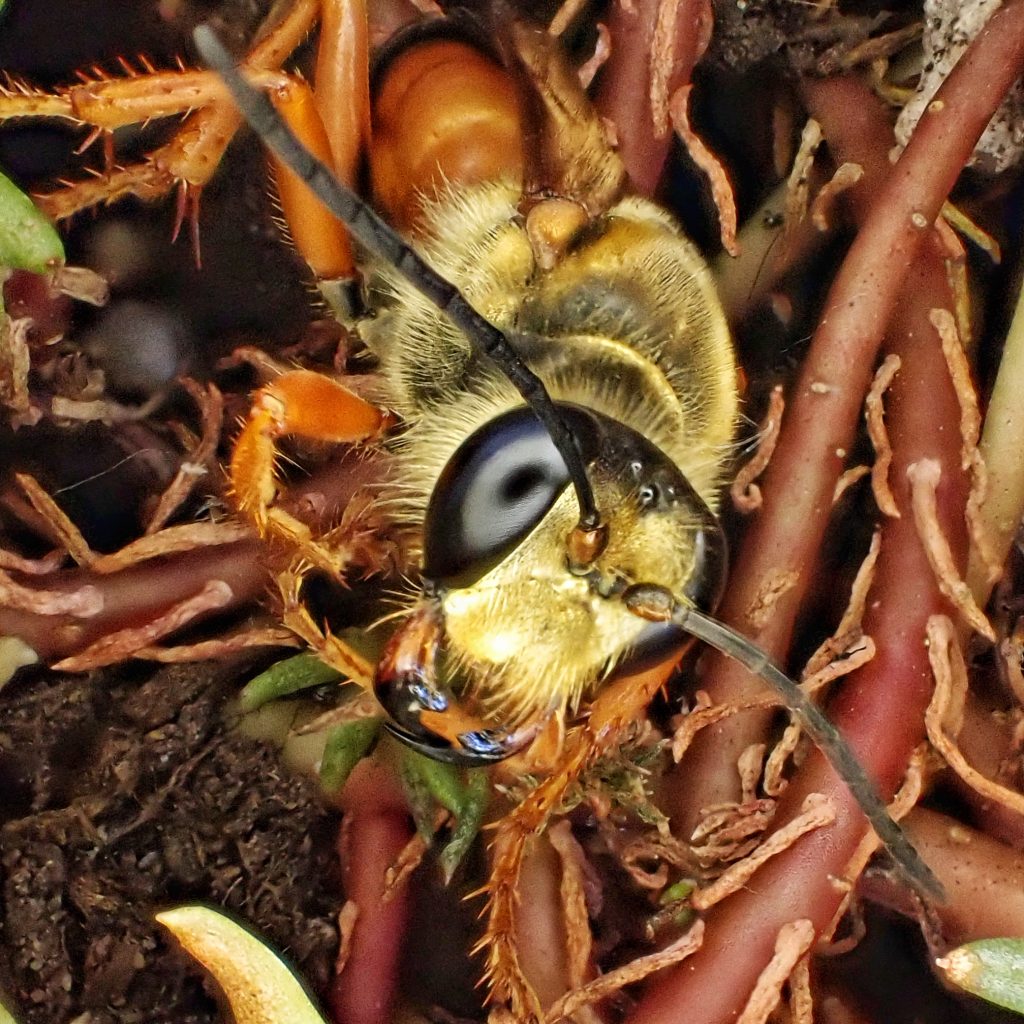
Habitat-Fields, meadows, and grasslands with nearby bare soil or sandy areas, with some populations of Orthoptera.
Range-Throughout the Americas; apparently region wide in appropriate habitat, though until fairly recently they were relatively unknown west of the Cascades.
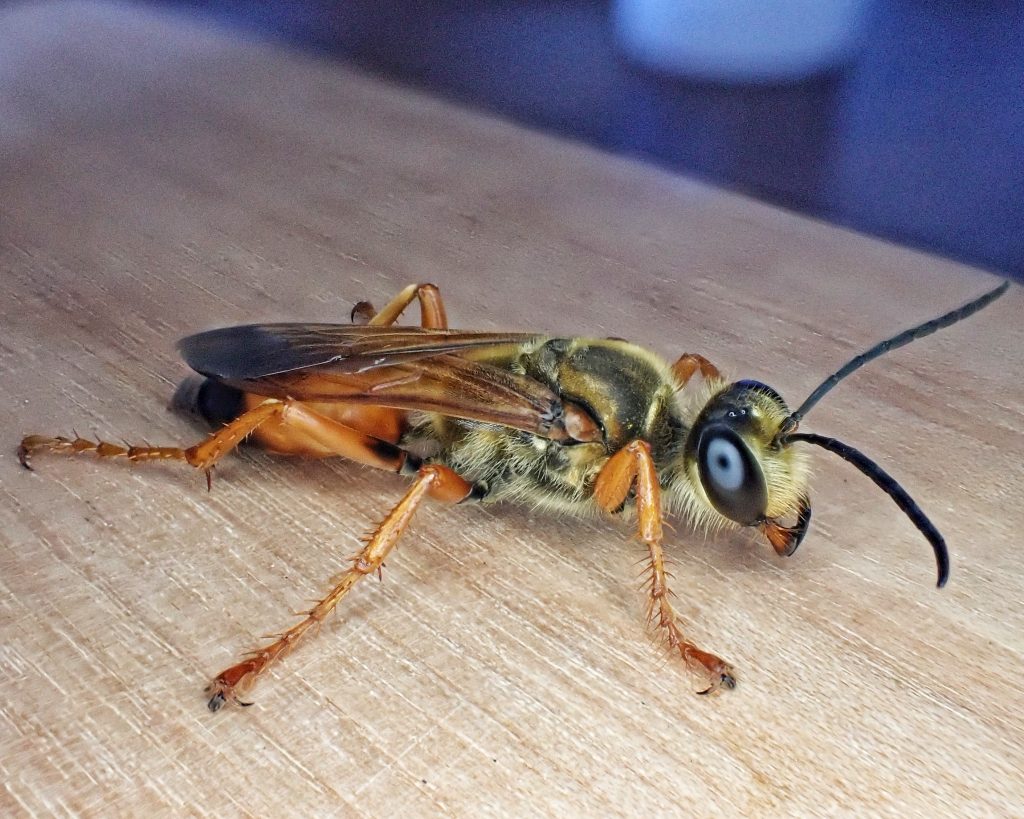
Eats-larval hosts include a variety of Orthoptera, including crickets, grasshoppers, but they seem to have a preference for katydids and tree crickets; adults take nectar from a variety of flowers.
Eaten by-The twisted wing insect Eupathocera westwoodi is a known parasitoid of adults; larvae are probably parasitized by bee flies and other parasitoids, but I can find nothing specific; many insectivorous birds and insects prey on these wasps at times, because the are not aggressive.
Adults active-June through September in our region, depending on elevation and latitude.
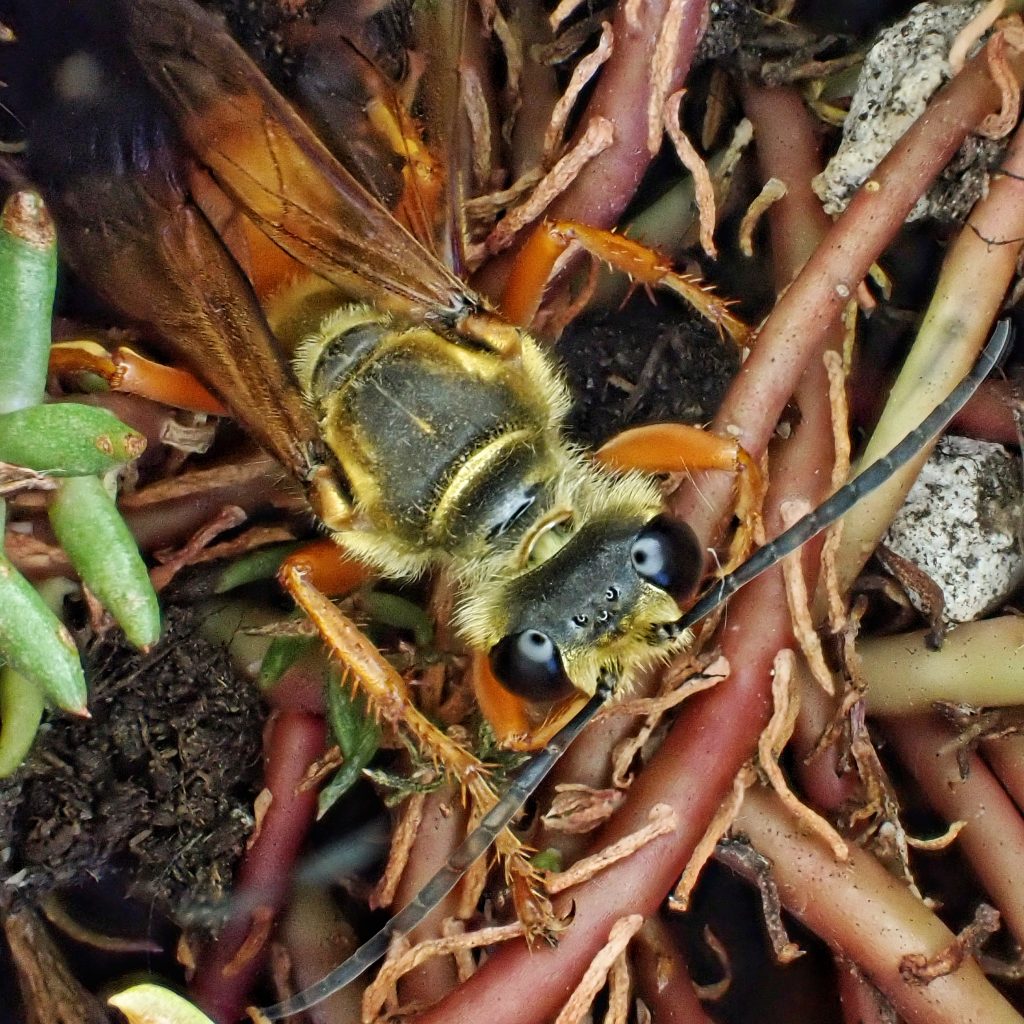
Life cycle-Univoltine ; nests are built on bare ground with good sun exposure; main entrance to the nest is vertical, about 12mm in diameter, and 4-6” deep; secondary tunnels radiate from the main entrance, and at the end of each one is a larger brood chamber that is parallel with the surface; once each of the chambers is filled with a paralyzed host the wasp deposits a single egg on the thorax of each one and seals the nest; eggs hatch in 2-3 days and immediately begin feeding; larvae overwinter in the nest, pupate in the spring, and emerge in summer; often builds up to 6 nests in a season; adults live 6-8 weeks and overall lifespan is a little over a year.
Etymology of names–Sphex is from a Greek word for a type of wasp. The specific epithet ichneumoneus is from the Greek word for ‘tracker’, appropriate since they are known to track their prey.
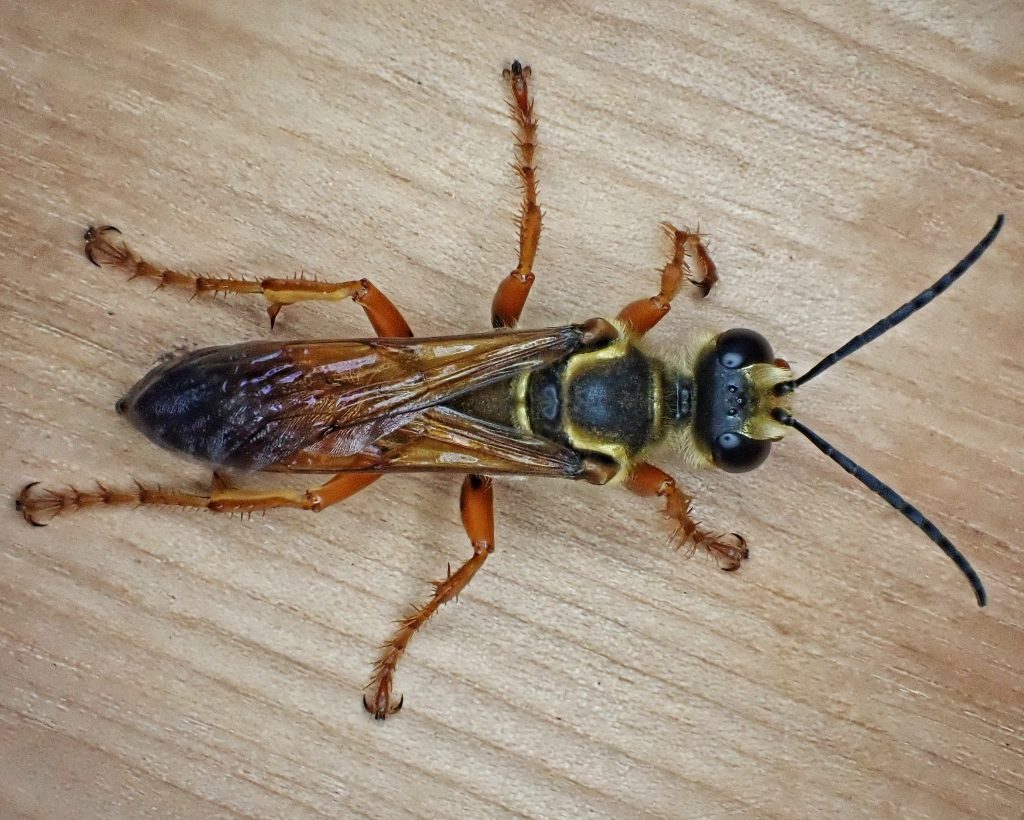
Species Sphex ichneumoneus – Great Golden Digger Wasp – BugGuide.Net
Beneficial insects in the landscape: #54 Digger Wasp
Great Golden Digger Wasp | Missouri Department of Conservation
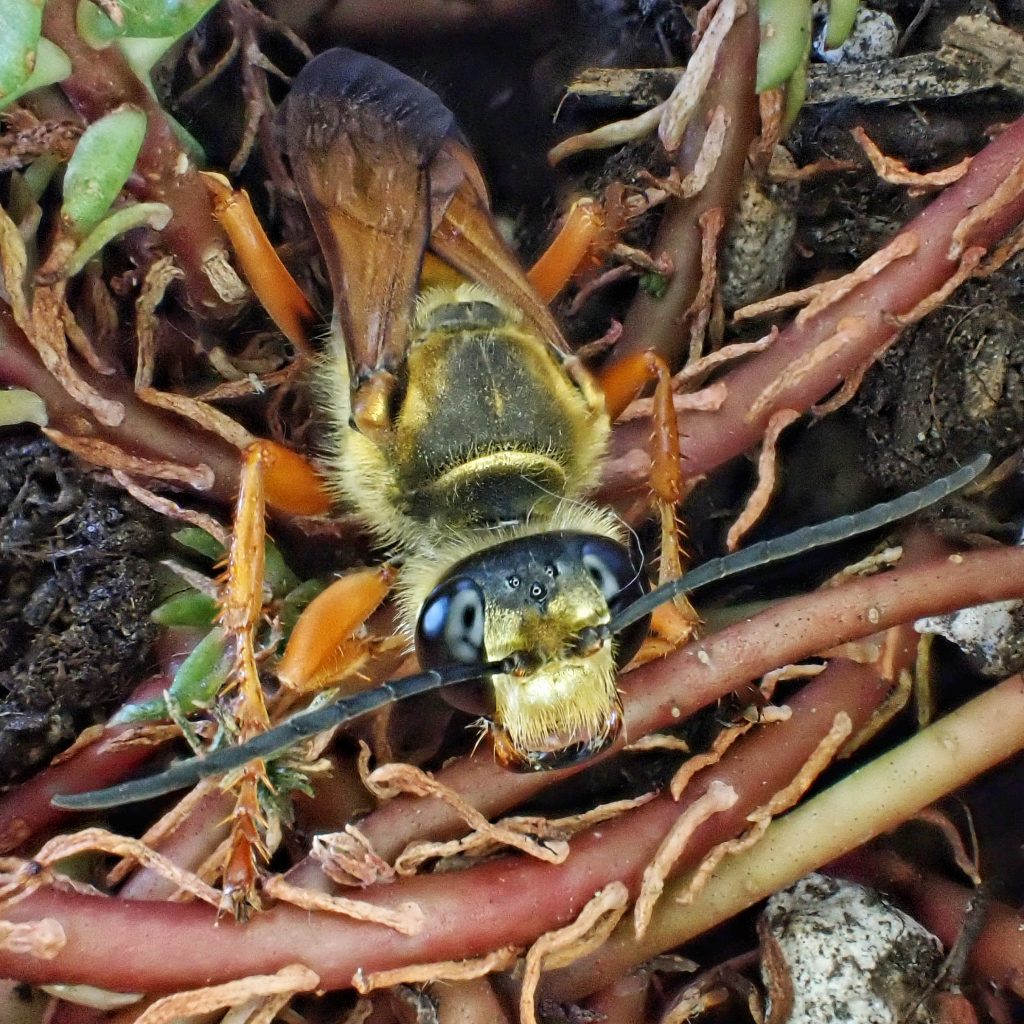
Very interesting critter! And huge eyes – will do a little googling to understand why. Just saw that the Asian giant hornet has been officially re-named the Northern Giant Hornet for all the obvious good reasons.
Thanks for telling me that. Although it’s a sad commentary that we have to change a perfectly good name so as not to inflame bigots. If you find anything specific about the eyes, please let me know. I had assumed it was because of their tunnel work.
Thank you for the great description. I have a bunch at my house enjoying my hydrangeas. I think you need a side profile photo to truly the orange abdomen.
Thanks for your appreciation, Jan!
Nice descriptions – thank you!
Just found one busy on my Goldenrod, Clallam County – August 2023
Cool! Glad to hear it was useful to you, Greg! Thanks for your appreciation!
Thanks! I was worried, though our honeybees and bumblebees are not!
It’s amazing how well they can recognize the difference between predators and neighbors, Laura! Glad to hear you found this useful. Thanks for your appreciation!